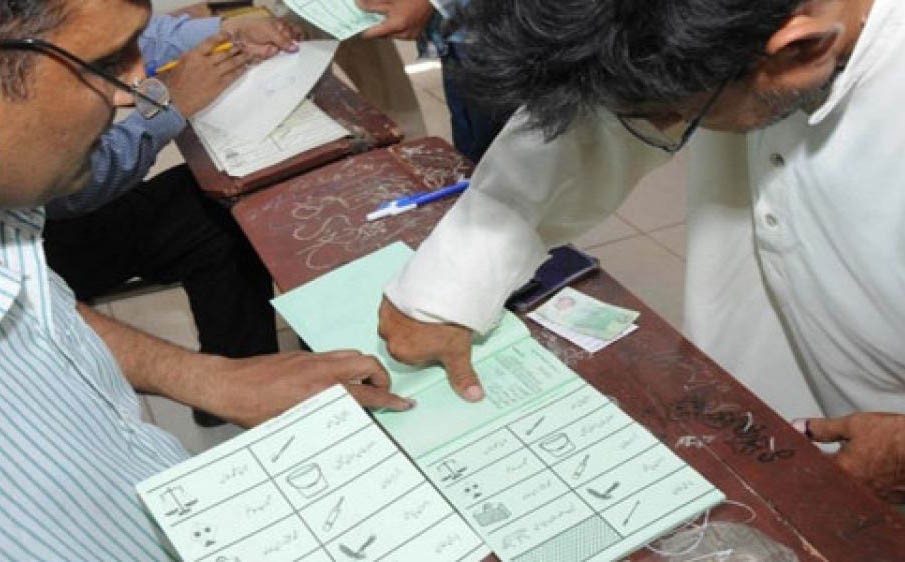
A case study of PS 128, a constituency of Sindh’s Provincial Assembly

Psephology -- the statistical study of elections and trends in voting -- in Pakistan is complex. All electoral reforms, in one way or the other, reflect this complexity. In Pakistan, from census to delimitations, and from elections to formation of government on the basis of election results are all political issues.
At present, there are 42 provincial assembly seats in Karachi. Provincial assembly constituency -- PS 128 -- is one of them.
This constituency has been chosen for a number of reasons. First, it is one of the Karachi’s most ethnically diverse constituencies located in the Landhi industrial area. It has a small portion of agriculture in the Sharafi Goth. Baloch and Sindhi are the oldest residents of the area while mohajirs are a significant number, too. Other communities include Pashto and Hindko-speaking population from KP and Pashtuns from FATA. Punjabis and Seraikis have been migrating in this area from other parts of the country since the 1950s.
Second, it is most responsive to national and local politics.
Third, it is also a centre of rural-urban migration.
Fourth, so far, it has been dominated by rival political forces like the Muttahida Quami Movement, the Muttahida Majlis-e-Amal, and the Awami Natioanal Party-Pakistan Peoples Party coalition.
Fifth, it is a model constituency in terms of the electoral reforms to be greatly affected by census, voters’ registration, delimitations and politics in general. Therefore, any change in the rule of the games can shift the political balance and affect the election results to a great extent.
According to the Election Commission of Pakistan, with a total population of 221,056, the registered voters in the constituency are 114,076, out of which 67,955 are male and 46,121 are female voters respectively. The PS 128 Karachi XL comprises of Charge from No.6-11 of District Malir and Charge of 23 of old district Karachi East, which has recently been included in the newly formed Korangi district.
A major area of the constituency comprises of old PS 97 constituency. However, in the light of 1998 census, new delimitation process was completed in 2002 under the Musharraf regime. It is obvious that politics were at play when new delimitation process was initiated.
Shah Jahan Khan, a Pashtun leader of the PPP and aide to former CM Sindh Qaim Ali Shah, is of the opinion that both census and delimitation process were manipulated by the MQM during the Musharraf regime.
Khurram Husain, senior journalist, writes in his column, "Karachi’s dragons" (Dawn March 19, 2015) that in 2008 and 2013, the MQM bagged almost all of its votes from three localities out of sixteen in the area. MQM used to sweep the entire 56 polling booths out of 286 by hook or by crook. In fact, during the delimitation MQM managed to incorporate an area where it had already registered a large number of votes from other parts of Landhi.
Read also: Editorial
Now, more or less half votes from the defunct union council 6 of Bhutto Nagar can defeat the rest of 4 union councils. Every candidate knows that he might otherwise be destined to lose if MQM is given a free hand. What political workers hoped for and expected was that non-Mohajirs would try and broker some kind of talks between the PPP and the ANP so that they could get over this competition and help the coalition defeat the MQM in 2013.
Nonetheless, this time with the same candidates, the coalition was not only marginalised by the rise of Maulana Aurangzeb Farooqui of proscribed Ahle Sunnat Wal Jamaat (ASWJ) but also threats from Taliban groups. In the last attack on the ANP-PPP coalition candidate dashed all hopes. A re-polling on some polling stations could not prevent the MQM from wining the seat.
Though Urdu-speaking are less than 25 per cent of the total population, yet in normal circumstances the MQM could turn the tables on the opponents. This is a perpetual threat that haunts the PPP, the ANP, the JI, the Jamiat Ulema Islam-Fazl, and the ASWJ.
The electoral battle against the arch-rival MQM forced the religious community leaders and middle classes political leadership to form a united front that often resulted in failure. However, political and religious movements can make a difference. In 2008, religious coalition under the banner of the MMA was able to mobilise the masses. And again, the rise of the Lawyers’ Movement, the tragedy of May 12, 2007, and Benazir Bhutto’s murder in December that year translated in ANP-PPP electoral victory.
In the absence of a mass movement, candidates have to rely on community and welfare associations and try make a deal with head of welfare organisations working in the area. In the past, labour leaders were influential. However, the demise of labour movement makes way for religious and middle classes to replace them.
Community leaders might covertly or overtly align themselves with one or the other candidate. Sindhi and Balochi votes in the constituency traditionally go to the PPP. New political forces have been emerging in the constituency since 2002. And they try to impact the whole electoral system -- from census to delimitation and to a large extent the elections itself.
Generally, candidates do not fully follow the elections rules and regulations. Before polling, candidates, party officials and supporters generally work together to find suitable poll agents for polling stations. On the election day, candidates have to arrange transport for voters, set up camps near the polling stations, and arrange food and drinks for party workers.
The dynamics of politics in PS 128 are influenced by national and local politics. Elections can be manipulated through a number of strategies and tactics, including head counting, voters’ registration, delimitations, polling schemes and counting. In sum, it is reflective of what is happening on a larger scale.